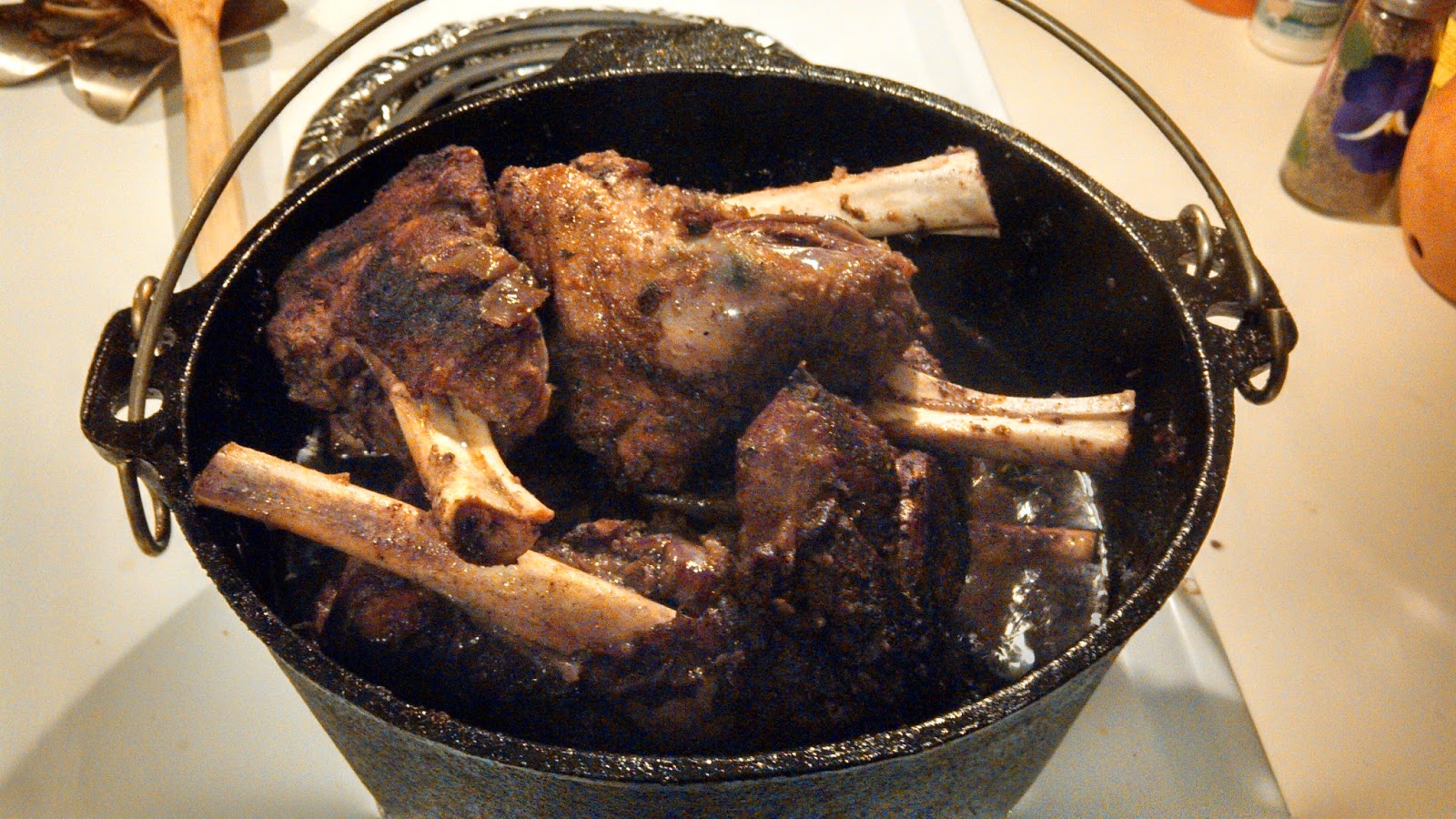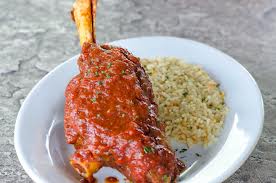In the Rivera clan we love lamb, especially lamb shanks. Usually we cook them Caribbean style (Muslo Cornero a la Caribe)—as noted in my cookbook, Puerto Rican Cuisine in America. The shanks are dusted with flour, then browned, and finally slow cooked in a tomato-based sauce with lots of herbs. But we also love Braised Lamb Shanks, which are baked in a casserole or Dutch oven. It has a different flavor than the tomato-based kind since the sauce includes red wine along with the usual herbs.
This recipe is easy to prepare. All you need is patience. It’s great for that special dinner for that special someone. Or just, just for the hell of it, giving the family a treat from the usual weekday supper. In my family we serve this dish with yellow rice with pigeon peas (Arroz con Gandules—this recipe is also in my cookbook). Add a loaf of crusty bread, and a good red wine (Cabernet Sauvignon, Pinot Noir, Zinfandel, etc., or whatever you desire, even beer if you don’t want wine. There are no set rules when it comes to one’s palette).
BRAISED LAMB SHANKS
6 lamb shanks (about 3 1/2 pounds)
Flour for dredging (about 1/2 cup)
Salt and freshly ground black pepper to taste
1/2 teaspoon dried oregano
1/4 teaspoon paprika
1/3 cup vegetable oil
2 tablespoons butter
1 large onion, thinly sliced
3 cloves garlic, peeled and finely chopped
1/4 teaspoon fresh thyme (or a pinch dried)
1/4 teaspoon fresh rosemary, chopped (or a pinch dried)
3/4 cup dry red wine
3/4 cup beef bouillon
Fresh parsley for garnish
1. Preheat oven to 350 degrees F.
2. Wash lamb shanks under cold running water and pat dry with paper towels.
3. On a plate, combine flour, salt, pepper, oregano and paprika. Dredge lamb shanks with the seasoned flour.
4. Heat the oil and butter over medium-high heat in an oven-proof casserole or Dutch oven (I prefer a large cast-iron pot or pan). Sauté the meat until browned on all sides. Remove to a plate and set aside.
5. Add the onion, garlic, thyme and rosemary to the pot and cook over medium heat, stirring, for 5 minutes. Return the lamb shanks to the pot, and add the wine and beef bouillon. Cover, place in the oven and bake 1 1/2 hours or until the meat is tender.
6. Remove the meat from the pot. Whisk together 2 tablespoons flour with 1/3 cup water and add to the juices in the pot. Cook, stirring constantly over medium-high heat until the gravy thickens and comes to a boil. Reduce heat to a simmer and cook 2-3 minutes more.
7. Serve the shanks with the gravy poured over the meat and garnish with fresh parsley.
Yield: 6 servings.






